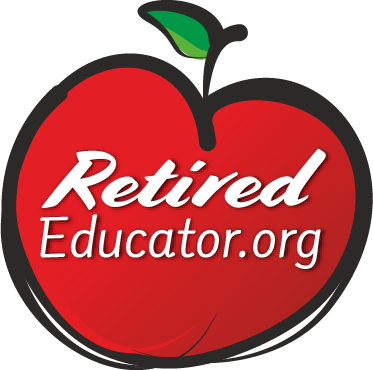
Guest article provided by: dreamingupwards.com
Being an educator is tough. It comes with so many things to balance—lesson plans, classroom dynamics, behavior management, checks for understanding, and the list goes on—and it can be intimidating to consider adding one more thing to your plate. However, the importance of having strong leadership skills nearly universal, whether your kids want to be an astronaut or a plumber after school. Especially for those who don’t see these skills modeled at home, we as teachers can step in and give them assistance that will last a lifetime.
Although I am a teacher by profession and got my MA in teaching, my background is actually in conflict resolution. I worked in several different positions focused on equipping students from primary school to university with the skills they needed to become leaders. Now, in addition to teaching, I run two websites focused on student success: one for university students (Dreaming Upwards) and one for students of all ages and backgrounds who love literature and language (Not Your English Class). As you can see, incorporating these ideas inside and outside of the classroom is very dear to me! And better yet, it’s not always extra work. Here are some ideas to get you started.
Incorporate SEL Activities
Social and Emotional Learning, SEL, has been a growing trend in schools. Although its intent can often be confused, misinterpreted, or misconstrued, the heart of the movement is to equip students with life skills in addition to academic skills. The Collaborative for Academic, Social, and Emotional Learning (CASEL) divides these groups into five main areas: self-awareness, self-management, responsible decision-making, relationship skills, and social awareness. These naturally form the basis of good leadership as well.
The overall idea is that schools, outside programs, and educators can help students to refine these skills throughout their K-12 experience. Then, once they graduate and go out into the real world, they will be more prepared to interact with others and cope with difficulties. SEL has been proven to have a wide variety of benefits both inside and outside the classroom, which you can read about here.
Many schools have SEL lessons that they give to teachers to present. These can be great, but it often means a lot more if teachers add their own touch, because students see that you are invested in them and actually care. Some simple ways of doing this include daily check ins, time for reflection, and ensuring that your classroom culture is conducive to teamwork and growth. If you want more ideas for incorporating SEL activities, you can read this article here.
Carefully Create Groups
As educators, we’re all familiar with the Zone of Proximal Development and modeling. Most of us are old pros at creating strategic groups for students based on ability. Many of us also group students together based on who gets along and whose learning style would complement whose.
However, sometimes it helps to dive deeper into this. Especially in secondary school, students are struggling to determine who they are. Their self-image is fragile, and many students are scared of being judged by others. This is where carefully chosen groups come in. I like to sit down and organize my students based off of complementary traits. You probably already do this to factor in different learning needs (i.e., 504s, gifted, etc.). However, I like to ask myself: who do I think will make this student comfortable enough to bring them to the next level?
Naturally, it is never another student’s responsibility to foster personal growth. Yet it can be incredibly useful to give the shy kid someone who is a good listener and overcame their own shyness, and then to give that student someone a little more outspoken. For kids who like to play devil’s advocate, it helps to place them with someone who will challenge them and make them think harder. As the teacher, you’re most familiar with dynamics, and you can use them to naturally enhance your students’ comfort and leadership capabilities.
One low-stress way to enhance this structure is to assign rotating roles. For example, if you have groups of four, you can have a leader, an organizer, a scribe, and a speaker. By rotating this every day, the power balance remains equal, and students have an opportunity to try out different roles and different skills.
Increase the Amount of Collaborative Projects
This is often pretty simple, and sometimes, it makes life easier for you as well!
Collaborative projects allow students to work together to reach a solution. Whether this is doing a group quiz, producing a creative project, or researching together, students need to learn how to collaborate. Many schools have shifted in recent years to increasing real-world focused projects and teamwork to mirror the working world. Take advantage of this. However, be sure to carefully structure it so that students feel supported and don’t descend into unnecessary chaos. Again, it helps to carefully create groups based on class dynamics.
One thing that I like to do is make anonymous peer grades part of the final project grade. All throughout school, I was the kid who all the work got dumped on. Because of this, I was initially hesitant to assign group projects as a teacher. However, this fantastic trick from college helps to ensure accountability throughout the process, and it also gives you good insight into what goes on when you’re not listening. For best results, I like to have the students give each group member a percentage grade based on their quality of work and give me an explanation. This has greatly increased productivity and collaboration in my classrooms!
Use Project Based Learning
Project Based Learning, or PBL, is another growing trend in education. The aim is to allow students to apply what they’re learning by engaging in meaningful, real-world projects that are put in context. These projects are usually extensive and planned out well in advance. This website gives more information and examples of what it would look like. One example that we used in my classroom was creating well-researched change proposals to send to different community actors instead of simply writing a dry research paper.
As you can see, PBL is a wonderful opportunity to allow your students to share their voices, work together, and enact change on their own. On our side, it does require a bit more effort and forethought. However, it is so worth it. Students grow tremendously in such a short time, both academically and socially. PBL allows them to really take control of their education and apply it toward something meaningful to them. Although you are monitoring them and assigning directions, they are the primary decision-makers, and they must keep themselves on track. At the end, they usually have to present a result, too, which means that you usually cover all five aspects of the aforementioned CASEL framework.
Model Behavior
It always comes back to modeling, doesn’t it?
As teachers, we are constantly modeling good behavior—in the classroom and in the community. Yet how often do we think about explicitly modeling leadership? We all know that students are smart and pick up on our cues. They understand how we’re feeling by our verbal and nonverbal communication. We can’t just say one thing and then do another.
So, when something comes up, it’s important that we model how to use those leadership skills. Did a lesson not go as expected? Turn it into a teachable moment and, if appropriate, walk students through your process. These things happen all the time. What’s important is that your students see you walking the walk, not just talking the talk.
Encourage Internships and Real-World Experience
While this is a bit out of your control, I recommend encouraging students toward real-world experience whenever you can. Especially as students get into high school, it helps significantly to have an opportunity to practice leadership skills in a real-world context. For interested students, internships and volunteer work are perfect opportunities. This also is great for college-bound students, as they have something to add to their application and resume. And yes, there are several internships opportunities for high school students that will benefit them greatly!
Sometimes, students simply don’t know what opportunities are out there. This is where it helps to see the school as an ecosystem. Take that extra step to be sure that students are connected with counselors and that there is communication between the different players. While I don’t recommend pushing anything toward anyone, this is an excellent thing to bring up if any students mention it or seem interested.
Points Students Toward Community Involvement
A lot of this depends on what your district or school allows you to do. However, allowing and encouraging your students to share flyers or pitches about clubs or other extracurricular activities helps to foster a sense of community. This also creates a tighter-knit environment within your classroom, as students are able to learn more about their peers and find new points to relate to.
If your school allows you to, consider offering extra credit for students who go to a related school event. For example, if they go to/participate in a play and do a (short) related assignment for English or they go to a community clean up for civics, it will still be related to your subject matter. It will also give some of them the push they need to get involved, and they will be able to practice their relationship skills and social awareness. Especially for more reserved kids, this is a great opportunity to show them that they are part of a larger community.
A Final Word
As educators, we are deeply committed to our students’ success. If you’re reading this article on retirededucator.org, you’re probably familiar with going the extra mile for your students. No matter the grade, there are easy (and more complicated) leadership fixes that you can incorporate for your students. Were these tips helpful? Let us know!
Image credit: Photo by Jason Goodman on Unsplash
